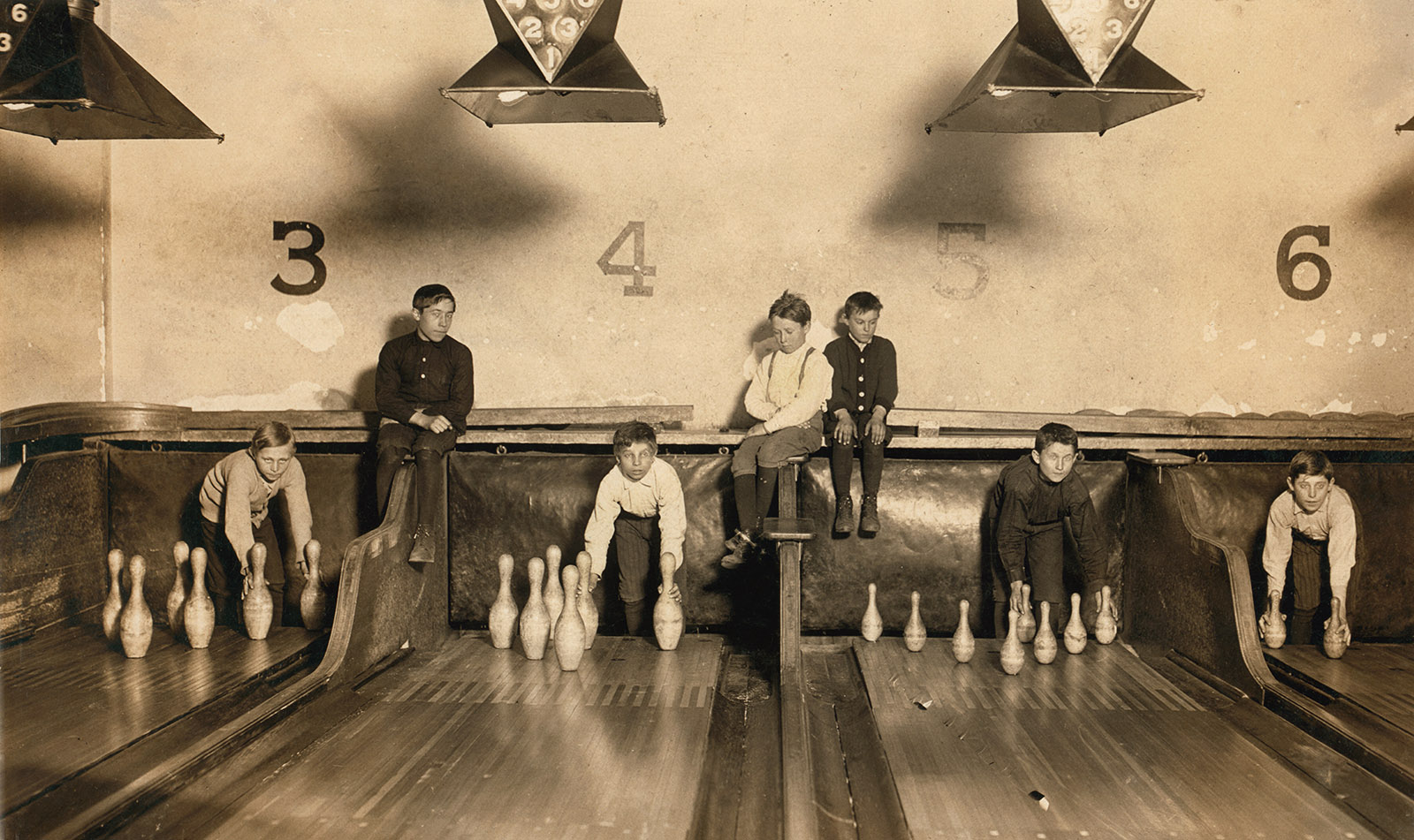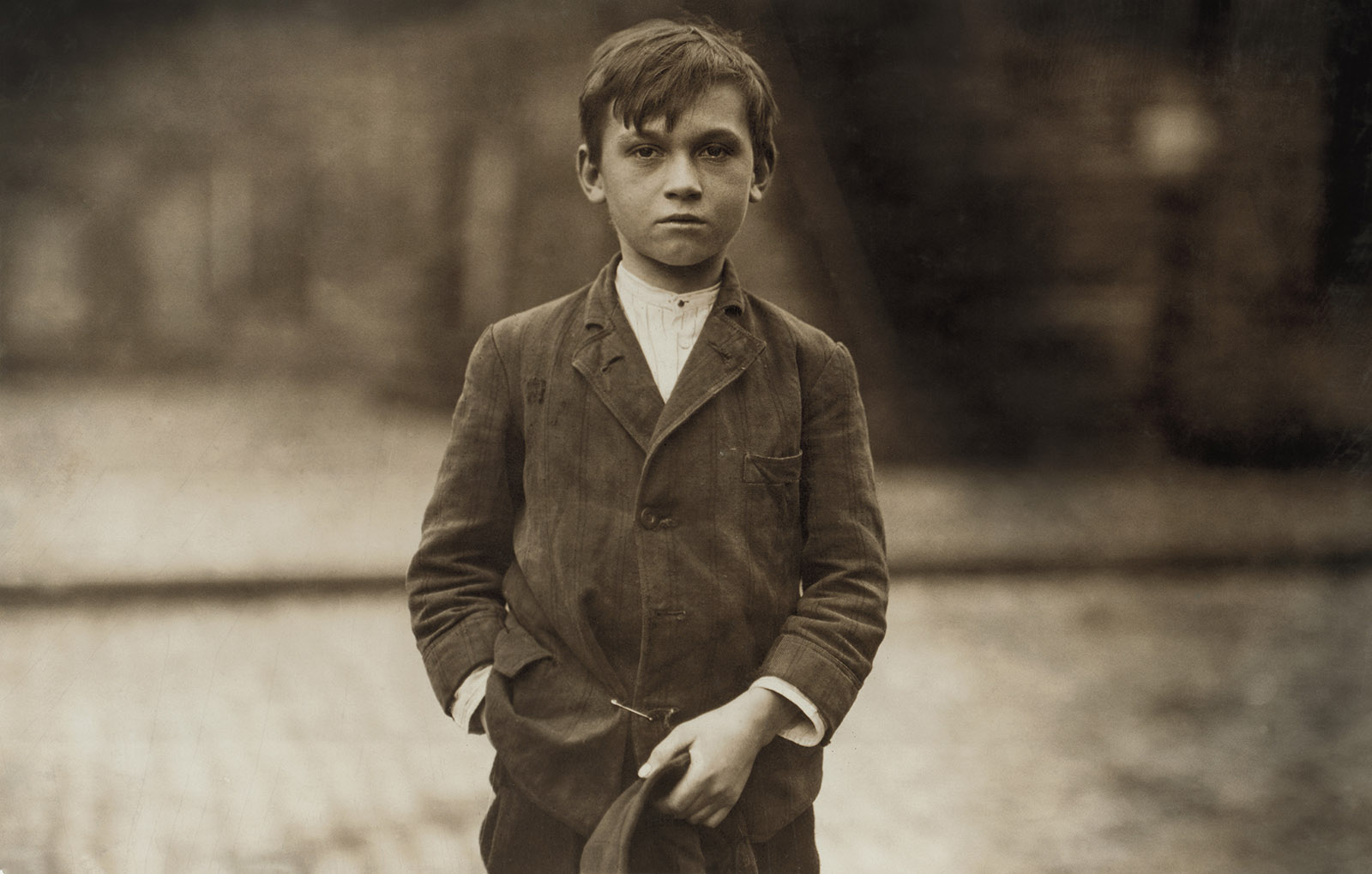During the summer of 1843, when he was twenty-three and had not yet published a word, Herman Melville worked as a pinsetter in a bowling alley in Honolulu and, according to the Melville authority Hershel Parker, “at quiet times picked up some skill as a bowler.” During the ensuing years, Melville, whose 200th birthday we are celebrating this year, became our most eloquent poet of the dead-end job. Billy Budd is hung from the yardarm; Moby-Dick drags the crew of the Pequod to the bottom of the sea. Bartleby, who goes blind mindlessly copying legal documents, worked previously as “a subordinate clerk in the Dead Letter Office” in Washington, D.C. “Conceive a man by nature and misfortune prone to a pallid hopelessness,” Melville writes, “can any business seem more fitted to heighten it than that of continually handling these dead letters, and assorting them for the flames?”
True enough, but in the annals of futility, the Sisyphean job of setting up pins in a bowling alley seems particularly pointless. You set up the pins; they’re knocked down; you set them up again, politely returning the ball to the bowler. Before the invention of the automatic pinsetting machine, adopted during the 1950s, pins were reset by poorly paid pinsetters, also known as pinboys or pin-monkeys. The sociologist and photographer Lewis Hine, documenting child labor for a decade from 1908, took several pictures of anxious boys watching for balls barreling down the alleys, as though they themselves were the pins.
Melville, apparently, was one of their forebears. He had deserted his whaling ship—another dead-end job—in the Marquesas Islands of French Polynesia and had made his way to the disreputable port of Honolulu, where he was appalled by the treatment of the native islanders. “Not until I visited Honolulu,” he wrote sardonically, “was I aware of the fact that the small remnant of the natives had been civilized into draught horses, and evangelized into beasts of burden.” There he found a job as a clerk in a general store—he’d previously clerked, briefly, in his brother’s fur-cap shop in Albany, New York—and supplemented his income at a bowling alley.
It should be said that the sole evidence for Melville’s career as a pinsetter comes from a letter published in 1850 in the Lansingburgh Democrat (Lansingburgh is the town near Albany where Melville lived for several years). The letter-writer, one H.R. Hawkins of Honolulu, mentions meeting someone who claimed to be “well acquainted” with Melville, “and knew him at a time when he was setting up pins in a ball alley.”
But what’s the evidence that Melville, as Parker claims, “picked up some skill as a bowler” in Hawaii? It seems reasonable to surmise that pinboys might find ways to experience the game from both ends. That other Albany bowler, Billy Phelan, works as a pinboy in William Kennedy’s Billy Phelan’s Greatest Game (1978), the second novel in his Albany cycle. “That was where the boy learned to bowl, sneaking free games after Duffy, the custodian, went off to the movies.”
But wait. Is there any evidence that Melville was a skilled bowler? Actually, there is. In 1849, Melville traveled to London to find a publisher for his novel White-Jacket, based on his voyage, on leaving Honolulu, aboard the naval frigate United States. During his four leisurely months in London, according to Melville scholar Andrew Delbanco, he went “book-buying, bar-hopping, theater- and museum-going, a man at ease with every aspect of urban life from the private gentlemen’s clubs to the spectacle of a public execution.”
He also went bowling. After consulting with a literary agent named David Davidson about the prospects for White-Jacket, he “walked with Davidson to American Bowling Saloon,” Melville noted in his journal on November 21. “Made me go in. Rolled one game & beat him.”
“Made me go in” suggests reluctance on Melville’s part. But he had already visited the American Bowling Saloon, on the Strand, on November 6. Unlike most bowling alleys today—including Richard Nixon’s hideous bowling alley in the White House, recently refurbished for the Trumps and still hideous—the London establishment was meant to attract elegant customers to the latest craze from America. “The decorations of the interior are in the Louis Quatorze style,” gushed the Penny Illustrated News in 1849, the same year Melville bowled there, “nothing can exceed the luxurious elegance which everywhere meets the eye—mirrors, candelabra, vases, rich carpets and couches.”
Biographers are at the mercy of their data: if Melville won a game in London, he must have learned to bowl in Honolulu. But is it possible that Melville polished his bowling skills in New York, while hurriedly writing Redburn and White-Jacket—“two jobs which I have done for money,” he wrote, “being forced to it as other men are to sawing wood”? New York experienced a bowling boom during the 1840s. The first indoor bowling alley opened on January 1, 1840; by 1849, according to the Historical Dictionary of Bowling, there were some four hundred bowling alleys in the city, at least one on every block of Broadway. The original game of nine-pins attracted so many gamblers that it was banned. And so, according to an unverified bit of historical lore (found, for example in the 1911 Britannica), ten-pins was invented to circumvent the prohibition.
Advertisement
Of all Melville’s books, the only one that includes multiple mentions of bowling happens to be White-Jacket, the book he was hawking in 1849. (Moby-Dick, by contrast, has only one, describing “the vast swells of the omnipotent sea; the surging, hollow roar they made, as they rolled along the eight gunwales, like gigantic bowls in a boundless bowling-green.”) In White-Jacket, Melville, like New York itself, seems to waver over the number of pins, suggesting that Melville was aware of what was happening in the local bowling alleys. The narrator compares a theatrical performance on shipboard to bowling a strike: “Ah Jack, that was a ten-stroke indeed!” Two chapters later, however, in one of many violent metaphors in the book drawn from bowling, the game has shifted from ten pins to nine: “Stripped to the waistbands, we fought like skinned tigers, and bowled down the Turkish frigates like nine-pins.” A chapter later, when cannon balls stowed on board are loosed in a violent storm, the midshipmen themselves are turned into pins:
The rolling to and fro of the heavy shot… on the gun-deck, had broken loose from the gun-racks, and converted that part of the ship into an immense bowling-alley. Some hands were sent down to secure them; but it was as much as their lives were worth. Several were maimed.
The scene, which may reflect Melville’s Hawaiian flashbacks of menacing bowling balls, has a parallel in Billy Phelan’s Greatest Game. “Martin was there the afternoon the pinboys went wild and rolled balls up and down the middle of the alleys at one another, reveling in a boyish exuberance that went bad when Billy… smashed his third finger.”
As in much of small-town America, bowling leagues in Kennedy’s Albany are the recreational glue—along with “beer, cigar smoke and alley wax”—that holds civic society together. In his 2000 book, Bowling Alone, the political scientist Robert Putnam documented the drastic decline, during the last decades of the twentieth century, of bridge clubs, VFW posts, and other such community-building groups. While bowling, according to Putnam, remains “the most popular competitive sport in America,” significantly outnumbering golf, softball, soccer, and jogging, “league bowling has plummeted in the last ten or fifteen years.” The significance of the trend for Putnam is “the social interaction and even occasionally civic conversations”—over beer and pizza—“that solo bowlers forgo.”
Bowling is not a contact sport, but in the American imagination generally, as for Melville himself, it often veers toward violence. Part of Michael Moore’s mordant irony in Bowling for Columbine (2002) is the grotesque juxtaposition between the teenage killers’ participation in this classic rite of small-town American life (although, in their case, as a cynical dodge for phys ed requirements) and then shooting it all up. Moore also filmed the Michigan Militia using bowling pins for target practice. When John Goodman’s Walter Sobchak draws a gun in the sublime league-bowling scene in the Coen brothers’ The Big Lebowski (1998), after an alleged rule infraction, he says, “Smokey, this is not ’Nam. This is bowling. There are rules.”
In perhaps the earliest bowling scene in American literature, Rip Van Winkle—a product, like Melville, of 1819—encounters, in a time-traveling dream, Henry Hudson and his men, drinking and playing nine-pins in the Catskills, as though in their own secret bowling league. Washington Irving’s classic tale is both a just-so story about thunder (Hudson’s men bowling in the mountains) and about how the Dutch, like Melville’s Gansevoort ancestors, imported bowling to the New World, where it flourished on the island of New Amsterdam, with Bowling Green at its southern tip, and spread to assorted Bowling Greens across the nation.
Like Rip, and many another amateur bowler since, Melville found the demands of job and family constraining. In a late prose-poem, he reimagined “the good-hearted good-for-nothing” Rip returning to his home after his twenty-year sleep, delighted to find a lilac growing from his ruined house, through no effort of his own. Rip Van Winkle, Bartleby, Herman Melville: all jobs, these saints of shirking seem to say, are ultimately dead-end jobs. And yet, Melville’s deep connection with his alter-ego Rip suggests a tantalizing possibility: instead of writing an epic on whaling, could Melville have written the epic of bowling instead? Now that would have been a ten-stroke indeed.
Advertisement




